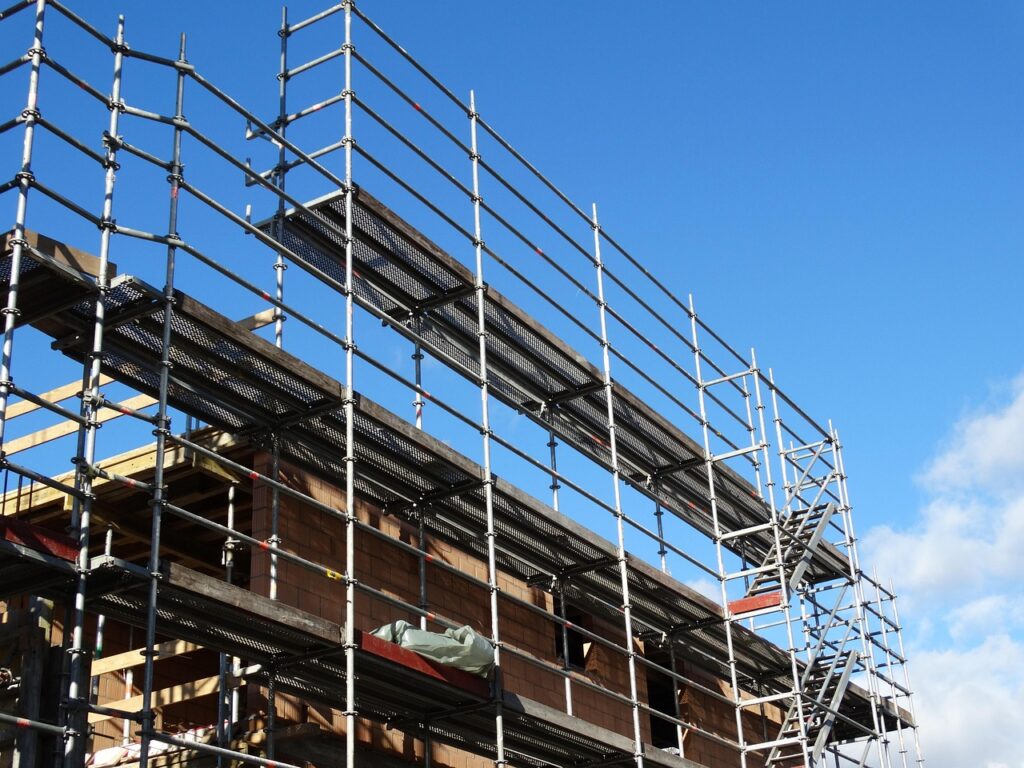Hello everyone, this is DIY Renova.
When you are DIYing your home renovation or renovation, the essential task is to "install scaffolding." Especially when working on roofs and exterior walls, you need safe and solid scaffolding.
This time, we will explain in detail, in a way that even beginners should understand and what to be careful about when borrowing scaffolding yourself from a contractor and going to get it.
The things you need when preparing the scaffold is summarized below.
1. Check the required vehicle size

First, you need an appropriate truck size to transport scaffolding material. General scaffolding companies transport the product by "3.5-7 ton trucks." However, for personal DIYers, a "1.5-ton truck" is sufficient.
Based on our experience at DIY Renova, even a 1.5-ton truck can be transported without any problems, even if it is divided into several rounds. We actually carried the scaffolding three times in a 1.5-ton truck, but we ended up carrying it even more due to a mistake in ordering materials, so we felt that if we had accurately planned it, we could have had to carry it twice.
You can drive with a regular license up to 1.5 tons. Please note that a large license will be required for more than 2 tons!
The key is to calculate the number of transports and the load capacity in advance. For rentals for 1.5-ton trucks, you can make reservations and compare them on the rental car shop website or price comparison site.
If you are transporting them in two separate sessions, consider what you want them to accumulate with each purchase.
Most 1.5-ton trucks are in stock, so we recommend expanding the range to local businesses and looking for them!
2. Safety equipment required for transport
Safety equipment is extremely important when transporting scaffolding materials. Don't forget to put safety first, and be sure to bring the following items with you.
Helmets
A helmet is essential to protect your head when carrying scaffolding materials. It protects you from accidents in the event of a scaffolding falling or accidents where you hit your head while unloading the vehicle.
Helmets can be easily purchased at home improvement stores or online shopping.
Gloves
Scaffolding material is made of metal and is heavy, and if held with bare hands, it may cut or cause injury. Additionally, wearing gloves makes it less slippery and safe to transport. It is recommended to choose a type that is highly resistant to cutting and has anti-slip properties.
3. Ingenuity to prevent damage to trucks
If you damage the rental truck, there will be additional costs. In particular, since the scaffolding material is made of metal, care must be taken to prevent damage to the truck bed.
Therefore, prepare the following:
Wood and boards
Protect the cargo bed by laying wood or thick plywood between the scaffolding material and the cargo bed. Additionally, unloading from the cargo bed is smoother, improving work efficiency.
If you are purchasing from a home improvement store, we recommend durable plywood with a thickness of 12mm or more.
You will also need long, narrow boards, so bring at least two pieces of wood long enough to cover the width of the truck. I think having about four bottles would make you feel more at ease, but it might be a case-by-case basis.
Personally, I think it would be best to use something that is a little thicker than the rafters. The lifter will absolutely need space when unloading the car.
rope
A rope is required to secure the scaffolding material firmly in place to prevent it from moving or falling during transportation. Make sure to have a strong load tightening belt or track rope. One truck is probably just enough for a 1.5-ton truck, but having multiple trucks, such as two, can help to secure them more stably.
I've seen some contractors fix it with a chain (!!)
Finally,

Once you're ready to go this far, you can safely head to transport scaffolding materials. In the next article, we will introduce tips and precautions for actually installing scaffolding. We will support DIY beginners in order to renovate safely and enjoyably, so please look forward to the next article!
Stay tuned for the next article! Enjoy DIY renovations with safety first!
If you're wondering "How much renovation or remodeling can I actually do on my own home?" or "Where should I even start?", please visit this page. If you're looking to learn more about specific renovation processes or construction details, don't miss this page as well!
*The links in this article include affiliate links. There is no additional charge when purchasing, but purchasing via the link will help you run the DIY Renova website. Thank you for your support.


Leave a Reply
You must be logged in to post a comment.